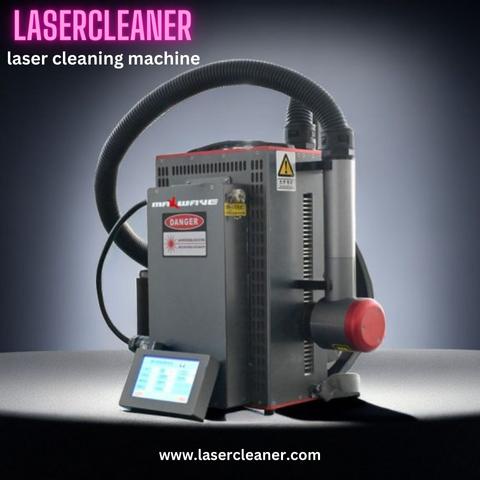Laser cleaning machines have emerged as a revolutionary technology in industrial cleaning processes. With their ability to remove contaminants, coatings, and rust from various surfaces with precision and efficiency, they have become indispensable tools across multiple industries. In this guide, we will delve into the intricacies of laser cleaning machine, exploring their functionality, applications, benefits, and considerations for implementation.
Functionality: Laser cleaning machine operate on the principle of laser ablation, wherein a high-intensity laser beam is directed onto the surface to be cleaned. This laser energy interacts with the contaminants or unwanted material, causing it to vaporize or break down into smaller particles. The controlled intensity and wavelength of the laser ensure that only the undesired material is removed, leaving the substrate unharmed.
Key Components:
- Laser Source: The heart of the laser cleaning machine, the laser source emits the high-energy beam required for cleaning.
- Scanner Head: Responsible for directing the laser beam precisely onto the target surface, the scanner head facilitates accurate cleaning.
- Control System: This component governs the parameters of the cleaning process, such as laser power, scanning speed, and beam focus, ensuring optimal results.
Applications:
- Industrial Cleaning: Laser cleaning machines are widely used in industries such as automotive, aerospace, and manufacturing to remove contaminants, paint, rust, and coatings from various surfaces.
- Conservation and Restoration: In the field of cultural heritage conservation, laser cleaning is employed to delicately remove dirt, grime, and unwanted layers from artworks, monuments, and artifacts without causing damage.
- Electronics Manufacturing: Laser cleaning ensures the cleanliness of delicate electronic components, improving product reliability and performance.
Benefits:
- Non-contact Cleaning: Unlike traditional cleaning methods that involve abrasives or chemicals, laser cleaning is non-contact, minimizing the risk of surface damage and contamination.
- Environmentally Friendly: Laser cleaning eliminates the need for harsh chemicals, reducing hazardous waste and environmental impact.
- Precision and Consistency: The controlled nature of laser cleaning enables precise removal of contaminants, ensuring consistent results across multiple applications.
- Cost Efficiency: While the initial investment in a laser cleaning machine may be significant, the long-term cost savings through reduced consumables and labor make it a cost-effective solution.
Considerations for Implementation:
- Material Compatibility: While laser cleaning is suitable for a wide range of materials, certain substrates may be sensitive to the heat generated during the process. Conduct thorough testing to ensure compatibility.
- Safety Measures: Laser cleaning machines emit high-energy radiation and require proper safety precautions, including the use of protective eyewear and adherence to safety guidelines.
- Training and Maintenance: Adequate training for operators and regular maintenance of the equipment are essential to maximize efficiency and prolong the lifespan of the machine.
Conclusion: The laser cleaning machine offer a versatile and efficient solution for removing contaminants and unwanted material from various surfaces across diverse industries. By understanding the functionality, applications, benefits, and considerations for implementation, businesses can harness the power of this cutting-edge technology to enhance productivity, quality, and sustainability in their operations.


No comments yet